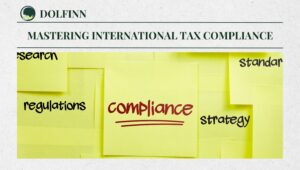
The Role of Financial Planning for Recession Survival
Economic recessions test the resilience of businesses. They expose vulnerabilities and reward preparedness. Financial planning—an often-underutilized tool—can be the key to not only surviving but thriving in such uncertain times. With the right strategies, businesses can mitigate risks, ensure liquidity, and align their operations to weather the storm. This guide explores actionable insights, examples of Entity-Level Controls (ELCs), and relevant Accounting Standards Codification (ASC) guidelines to help your business navigate through recessions successfully.
1. The Role of Financial Planning in Crisis Management
Financial planning is akin to having a well-charted map during a storm. It ensures that businesses are prepared to:
- Forecast cash flow: Anticipating revenue and expenses under varying economic conditions helps maintain liquidity.
- Streamline costs: Identifying non-essential expenditures and reallocating resources efficiently.
- Prioritize investments: Ensuring funds are directed towards high-impact areas that provide long-term value.
Case Example:
During the 2008 global financial crisis, companies like Procter & Gamble excelled because they had robust financial plans in place. They focused on core markets, optimized supply chains, and maintained their liquidity reserves—all results of proactive financial planning.
2. Understanding Entity-Level Controls (ELCs)
ELCs are crucial components of an organization’s internal control framework. These controls help address risks at the organizational level, ensuring alignment with strategic goals and financial stability. During recessions, ELCs play a pivotal role in maintaining governance and mitigating risks.
Examples of Entity-Level Controls:
- Risk Assessment Process:
- Regularly assessing economic risks to adapt strategies.
- Example: A retail company revising its inventory procurement plan to avoid overstocking during declining consumer demand.
- Monitoring Activities:
- Continuously reviewing key financial metrics such as debt-to-equity ratio, cash flow forecasts, and profit margins.
- Example: Implementing a weekly review of financial performance to ensure timely corrective measures.
- Control Environment:
- Setting a strong tone at the top by leadership to enforce prudent financial practices.
- Example: A CEO mandating all departmental budgets be reviewed for cost-cutting opportunities.
- Information and Communication:
- Ensuring timely and transparent communication of financial risks and decisions across all levels of the organization.
- Example: Sharing monthly financial updates with all managers to align strategies and expectations.
- Oversight by Governance Bodies:
- Involving board members in key financial decisions during economic downturns.
- Example: A manufacturing company’s board approving only essential capital expenditures to conserve cash.
3. Best Practices in Financial Planning During a Recession
1. Diversify Revenue Streams:
- Why: Relying on a single product or market increases vulnerability.
- Example: A software company expanding into subscription-based services to stabilize revenue.
2. Strengthen Liquidity Reserves:
- Why: Maintaining cash reserves ensures the ability to cover operational expenses for extended periods.
- Best Practice: Maintain at least 6-12 months of operational costs in liquid assets.
3. Conduct Scenario Planning:
- Why: Helps prepare for best-case, worst-case, and moderate outcomes.
- Example: A logistics company forecasting revenue impacts if fuel prices rise by 15%.
4. Align with ASC Standards:
- Why: Ensures compliance and builds stakeholder trust.
- Example: Adhering to ASC 205-40 for “Going Concern” assessments.
5. Leverage Technology:
- Why: Automation reduces costs and enhances efficiency.
- Example: Using AI-based forecasting tools to model financial outcomes.
6. Optimize Cost Structures:
- Why: Lean operations increase resilience.
- Example: Outsourcing non-core functions or renegotiating supplier contracts.
4. Key ASC References for Financial Planning
ASC 205-40: Presentation of Financial Statements – Going Concern
This standard mandates businesses to evaluate and disclose their ability to continue as a going concern. Regular financial planning ensures businesses can:
- Identify risks early.
- Communicate potential uncertainties transparently.
Example: A startup facing funding delays prepared financial disclosures aligning with ASC 205-40, reassuring investors of their strategy to manage cash flow challenges.
ASC 606: Revenue Recognition
Proper revenue recognition is critical during recessions to avoid overstating earnings or misrepresenting deferred income.
Example: A SaaS company ensuring subscription revenues are recognized over the contract’s life rather than upfront.
ASC 450: Contingencies
ASC 450 provides guidance on disclosing potential liabilities. In a recession, clear disclosure builds trust with stakeholders.
Example: A company disclosing potential litigation risks that could impact financial performance.
5. Building Resilience Through Financial Planning and ELCs
Combining financial planning with robust ELCs and ASC compliance creates a strong foundation for resilience.
Steps to Build Resilience:
- Integrate Financial Planning with Risk Management:
- Align cash flow forecasts with risk assessments.
- Example: Conducting quarterly stress tests on financial models.
- Enhance Governance Mechanisms:
- Involve leadership in financial decision-making.
- Example: Forming a recession-response committee to oversee critical financial operations.
- Implement Continuous Monitoring:
- Review KPIs and financial performance regularly.
- Example: Tracking days sales outstanding (DSO) to ensure timely collections.
- Adopt Agile Practices:
- Stay flexible with budgets and reallocate resources as needed.
- Example: A company reducing marketing expenses while boosting customer retention efforts.
Real-World Example:
A mid-sized healthcare provider leveraged financial planning and ELCs during the COVID-19 pandemic. They established a crisis management team, performed scenario analyses, and ensured compliance with ASC 205-40 and ASC 606. As a result, they maintained operations and avoided layoffs.
6. Challenges and How to Overcome Them
1. Resistance to Change:
- Challenge: Employees may resist budget cuts or operational changes.
- Solution: Transparent communication and involvement in planning decisions.
2. Uncertainty in Revenue Projections:
- Challenge: Difficulties in forecasting revenue during volatile markets.
- Solution: Use conservative estimates and update forecasts frequently.
3. Managing Stakeholder Expectations:
- Challenge: Balancing investor and customer expectations.
- Solution: Maintain transparency through detailed financial disclosures and regular updates.
7. Conclusion
Recession-proofing your business requires a mix of foresight, discipline, and adaptability. Financial planning—backed by strong Entity-Level Controls and adherence to ASC guidelines—ensures that businesses are prepared for the worst while positioning themselves for long-term success. By embracing best practices such as diversifying revenue, optimizing costs, and leveraging technology, your organization can navigate through economic downturns with resilience and confidence.
Summary
Economic downturns challenge even the most resilient businesses. Effective financial planning can be your best defense against a recession. This guide uncovers actionable strategies, examples of Entity-Level Controls, and key ASC guidelines to help your business thrive amidst uncertainty.
Latest Posts
- Top Cash Flow Forecasting Tools You Can’t Ignore for Global Businesses

- Mastering Profit vs. Cash Flow: 5 Key Strategies for Financial Success

- 5 Key Advantages and Disadvantages of Outsourced Accounting: Is Outsourced Accounting Worth the Risk?

- Mastering Cash Flow Management in 2025: 7 Proven Strategies for Financial Success

- Mastering International Tax Compliance: 7 Crucial Strategies for Multinational Success

- 5 Common Bookkeeping Mistakes Small Businesses Make and How to Avoid Them

